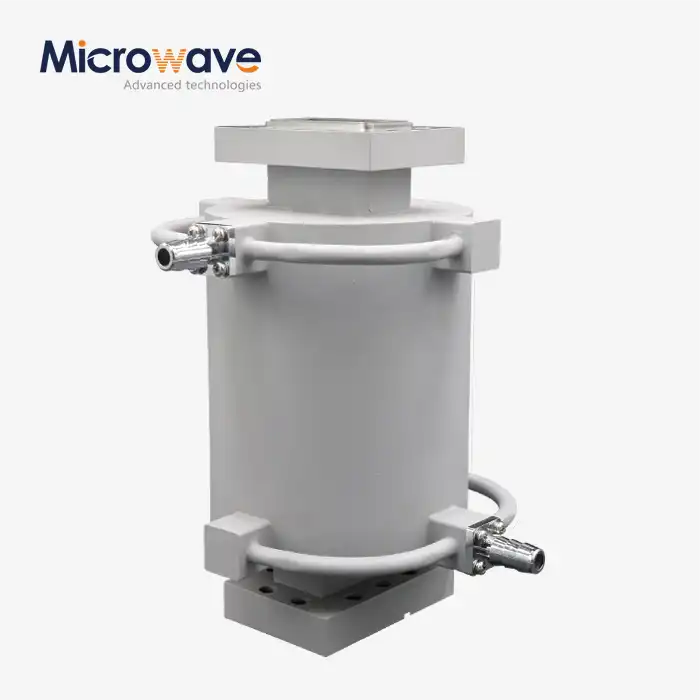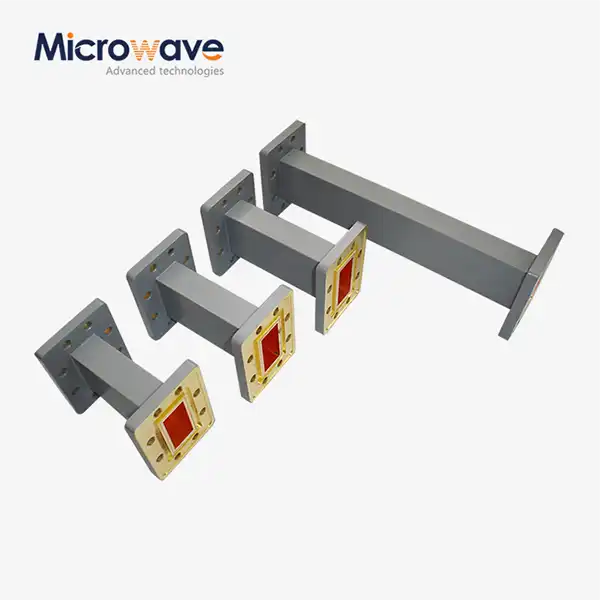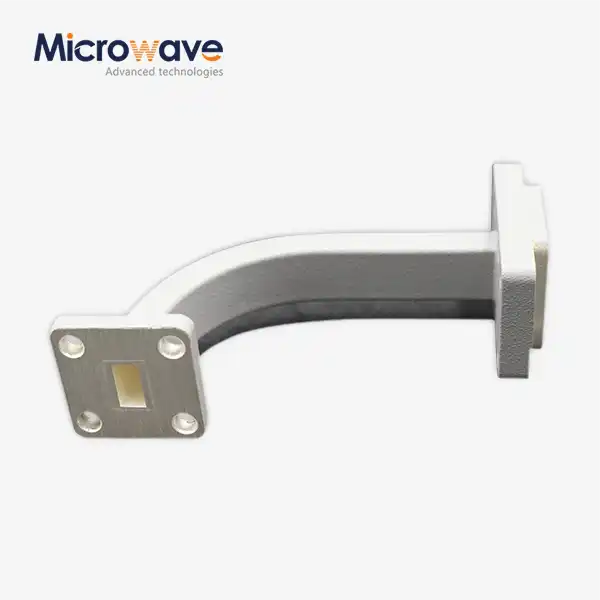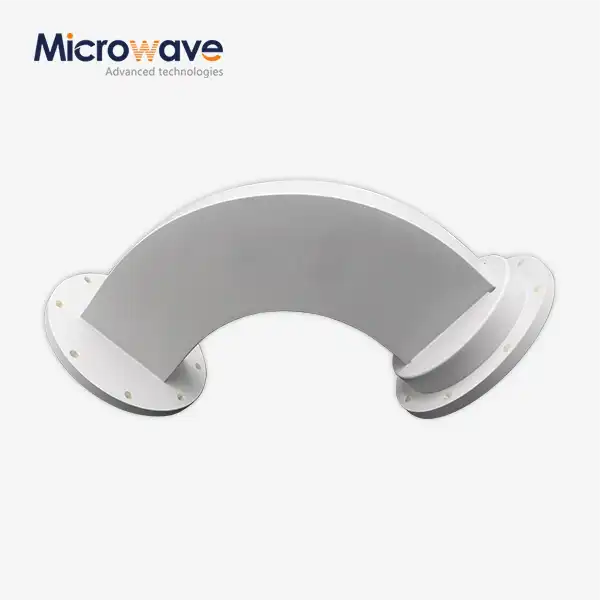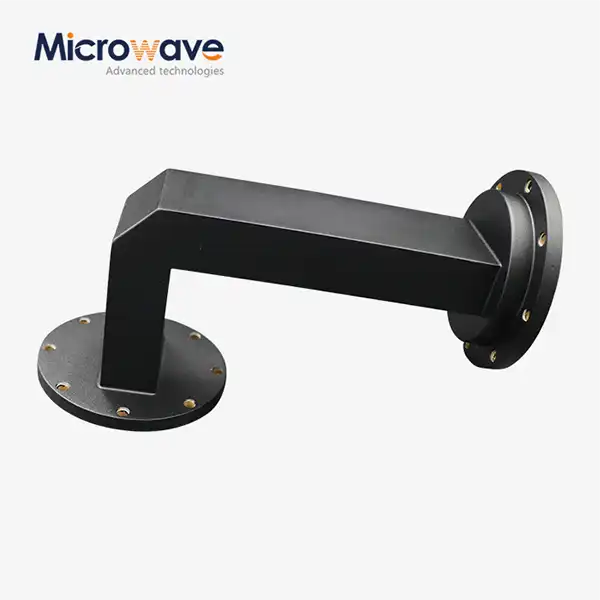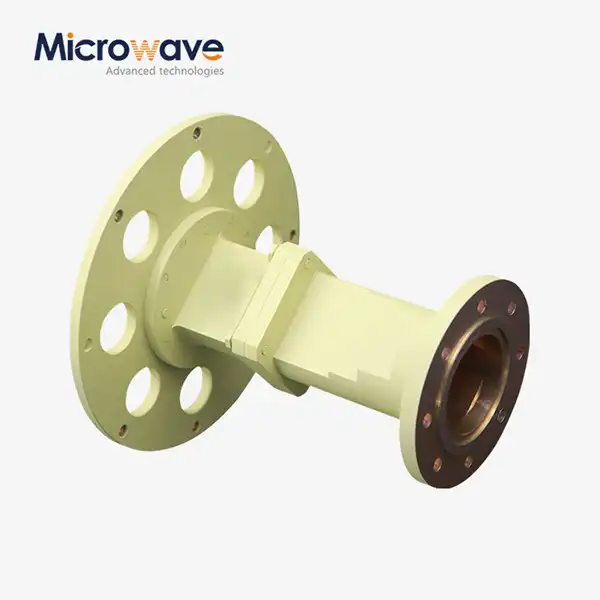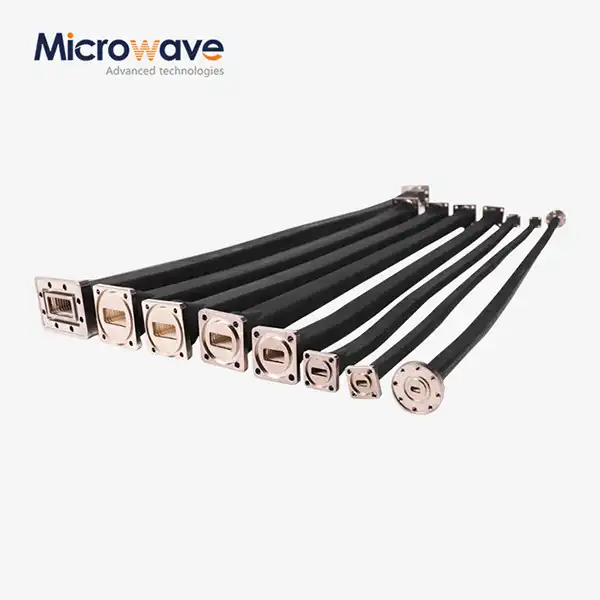How Do Dimensions Such as Length, Width, and Gap Affect Wave Propagation in a Short Plate Waveguide?
The dimensional characteristics of waveguide components fundamentally determine their electromagnetic performance, and understanding these relationships is crucial for optimal system design. In short plate waveguide applications, the interplay between length, width, and gap dimensions creates complex electromagnetic field distributions that directly influence wave propagation characteristics, reflection coefficients, and overall system efficiency. This comprehensive analysis explores how these critical dimensions shape electromagnetic behavior, providing engineers with essential insights for designing high-performance microwave systems. Advanced Microwave Technologies Co., Ltd., with over 20 years of specialized experience in waveguide technology, has extensively studied these dimensional relationships to optimize short plate waveguide performance across frequencies ranging from 1.72 GHz to 110 GHz, delivering solutions that meet the stringent requirements of satellite communications, aerospace, defense, and telecommunications applications.
Impact of Length on Wave Propagation Characteristics
Resonance Effects and Standing Wave Patterns
The length dimension of a short plate waveguide creates profound effects on electromagnetic wave behavior, primarily through the establishment of resonant conditions and standing wave patterns. When electromagnetic waves encounter the short plate waveguide, the length determines the phase relationship between incident and reflected waves, creating specific resonance frequencies where maximum reflection occurs. These resonant conditions are fundamental to the component's function as a high-reflection termination, with VSWR values reaching 60:1 minimum to provide effective signal blocking. The length parameter directly influences the frequency response characteristics, with quarter-wave and half-wave relationships creating predictable patterns of high and low reflection across the operating bandwidth. Advanced Microwave Technologies Co., Ltd. leverages this dimensional control to optimize short plate waveguide performance across 18 different waveguide bands, from WR-10 to WR-430, ensuring precise electromagnetic behavior for each specific application requirement. The length dimension also affects the bandwidth over which the short plate waveguide maintains its high reflection characteristics, with longer plates typically providing broader bandwidth performance but potentially introducing unwanted resonances at specific frequencies.
Frequency-Dependent Behavior and Bandwidth Control
The relationship between short plate waveguide length and frequency response creates critical design considerations for broadband applications. As frequency increases, the electrical length of the plate changes proportionally, shifting resonant frequencies and altering reflection characteristics across the operating band. This frequency-dependent behavior requires careful dimensional optimization to maintain consistent performance across wide frequency ranges, particularly important for applications spanning multiple octaves. The length dimension influences the component's ability to maintain stable VSWR characteristics across temperature variations and mechanical tolerances, with shorter plates generally exhibiting more stable performance but potentially reduced reflection efficiency. Advanced Microwave Technologies Co., Ltd. addresses these challenges through precision engineering techniques that maintain tolerances critical for maximum performance and longevity. The company's expertise in handling frequencies up to 110 GHz demands exceptional attention to length dimension control, as even minor variations can significantly impact high-frequency performance. Manufacturing processes incorporate advanced machining techniques and quality control procedures that ensure each short plate waveguide meets exact dimensional specifications, resulting in predictable and reliable electromagnetic behavior across the entire operating frequency range.
Phase Relationship and Impedance Matching
The length of a short plate waveguide fundamentally determines the phase relationship between the incident wave and the reflected wave, creating impedance transformation effects that influence overall system performance. This phase relationship directly affects how the short plate waveguide interacts with adjacent waveguide components, potentially creating impedance mismatches that degrade system efficiency. Proper length optimization ensures that the phase relationship enhances rather than degrades the desired reflection characteristics, particularly important in applications requiring precise signal control. The impedance transformation properties of the length dimension become increasingly critical at higher frequencies, where small dimensional variations can create significant phase errors. Advanced Microwave Technologies Co., Ltd. utilizes sophisticated electromagnetic simulation tools combined with extensive measurement capabilities in their 24m Microwave Darkroom to validate length dimension effects across the entire frequency range. The company's Antenna Plane Near and Far Field Measuring Recombination Chamber enables precise characterization of phase relationships and impedance effects, ensuring that each short plate waveguide delivers optimal performance in its intended application. Temperature stability considerations also influence length dimension selection, as thermal expansion effects can alter the electrical length and shift the phase relationships, requiring careful material selection and dimensional compensation techniques.
Width Dimension Effects on Electromagnetic Field Distribution
Mode Control and Field Uniformity
The width dimension of a short plate waveguide plays a critical role in controlling electromagnetic mode propagation and establishing uniform field distributions across the waveguide cross-section. Proper width selection ensures that only the desired fundamental mode propagates while suppressing higher-order modes that could degrade performance or create unwanted interference. The width dimension directly affects the characteristic impedance of the waveguide system and influences how electromagnetic energy couples between different components. Field uniformity across the width dimension becomes particularly important in applications requiring consistent electromagnetic behavior, such as antenna feed systems and precision measurement applications. Advanced Microwave Technologies Co., Ltd. designs short plate waveguide components with carefully optimized width dimensions that ensure maximum field uniformity while maintaining compatibility with standard waveguide interfaces. The company's extensive experience with waveguide sizes from WR-10 to WR-430 provides deep understanding of how width variations affect electromagnetic behavior across different frequency bands. Manufacturing precision in the width dimension directly impacts the component's ability to maintain consistent performance across production units, requiring strict quality control procedures and precision machining capabilities. The width dimension also influences the power handling capability of the short plate waveguide, with wider configurations generally supporting higher power levels but potentially introducing mode conversion issues at the boundaries.
Coupling Efficiency and Interface Compatibility
Width dimension optimization significantly affects the coupling efficiency between the short plate waveguide and adjacent system components, determining how effectively electromagnetic energy transfers between interfaces. Proper width matching ensures minimal reflection at component interfaces while maximizing the desired termination reflection at the short plate itself. The width dimension must accommodate manufacturing tolerances while maintaining consistent electromagnetic performance, requiring careful balance between mechanical practicality and electrical requirements. Interface compatibility considerations extend beyond simple dimensional matching to include surface finish, contact pressure, and environmental sealing requirements that affect long-term performance stability. Advanced Microwave Technologies Co., Ltd. addresses these challenges through comprehensive design approaches that consider both electromagnetic and mechanical requirements simultaneously. The company's capability to provide customizable designs ensures that width dimensions can be optimized for specific application requirements while maintaining compatibility with existing system architectures. Quality control procedures include precise width measurement techniques and electromagnetic verification testing that confirms proper coupling efficiency across the operating frequency range. Environmental compliance considerations, including RoHS standards adherence, influence material selection and manufacturing processes without compromising the critical width dimension accuracy required for optimal performance.
Thermal and Mechanical Stability Considerations
The width dimension of short plate waveguide components must accommodate thermal expansion effects while maintaining stable electromagnetic performance across operating temperature ranges. Temperature-induced width variations can alter characteristic impedance, shift resonant frequencies, and degrade coupling efficiency, particularly critical in aerospace and defense applications exposed to extreme environmental conditions. Material selection plays a crucial role in width dimension stability, with coefficients of thermal expansion carefully considered during design optimization. Mechanical stress effects from mounting hardware, environmental vibration, and thermal cycling can also influence width dimension stability over the component's operational lifetime. Advanced Microwave Technologies Co., Ltd. addresses these challenges through robust material selection, including brass and stainless steel options that provide exceptional durability even in harsh environments. The company's ISO 45001:2018 certification demonstrates commitment to occupational health and safety considerations that extend to proper handling and installation procedures that maintain width dimension integrity. Manufacturing processes incorporate stress-relief techniques and dimensional stability verification that ensures consistent width dimension performance throughout the component's service life. High temperature stability engineering enables reliable operation across wide temperature ranges, making these components suitable for extreme conditions encountered in aerospace and defense applications.
Gap Spacing and Its Influence on Reflection Properties
Reflection Coefficient Optimization
The gap spacing in short plate waveguide configurations represents one of the most critical dimensional parameters affecting reflection characteristics and overall electromagnetic performance. This gap dimension creates a discontinuity in the electromagnetic field that generates the desired high-reflection properties, with the spacing directly determining the magnitude and frequency response of the reflection coefficient. Optimal gap spacing ensures maximum reflection efficiency while minimizing unwanted transmission or absorption losses that could degrade system performance. The relationship between gap spacing and wavelength becomes particularly important at higher frequencies, where small dimensional variations can significantly impact reflection properties. Advanced Microwave Technologies Co., Ltd. leverages extensive electromagnetic modeling and measurement capabilities to optimize gap spacing for each specific application and frequency range. The company's 24m Microwave Darkroom provides the controlled environment necessary for precise characterization of gap spacing effects across the full frequency range from 0.5 to 110 GHz. Manufacturing precision in gap spacing control requires advanced machining techniques and quality control procedures that ensure consistent reflection properties across production units. The gap spacing optimization process must also consider bandwidth requirements, with different spacing values optimized for narrowband versus broadband applications.
Field Enhancement and Power Handling
Gap spacing in short plate waveguide configurations creates regions of enhanced electromagnetic field intensity that directly affect power handling capabilities and component reliability. The concentration of electromagnetic fields within the gap region can lead to voltage breakdown or material heating effects if not properly controlled through dimensional optimization. Proper gap spacing design ensures that field enhancement remains within acceptable limits while maintaining the desired reflection properties across the operating power range. Material selection and surface treatment considerations become critical in the gap region, where high field intensities may create enhanced wear or degradation effects over time. Advanced Microwave Technologies Co., Ltd. addresses these challenges through comprehensive power handling analysis combined with extensive testing across realistic operating conditions. The company's expertise in high-frequency applications up to 110 GHz provides deep understanding of field enhancement effects and their impact on long-term reliability. Manufacturing processes incorporate surface finish specifications and quality control procedures that ensure consistent gap spacing dimensions and optimal field distribution characteristics. Thermal management considerations also influence gap spacing design, as field enhancement effects can create localized heating that affects component performance and reliability.
Frequency Selectivity and Bandwidth Control
The gap spacing dimension provides precise control over frequency selectivity characteristics, enabling optimization of short plate waveguide performance for specific bandwidth requirements. Different gap spacing values create distinct frequency response patterns, with narrow gaps typically providing broader bandwidth reflection while wider gaps may offer enhanced frequency selectivity. This dimensional control enables system designers to tailor reflection characteristics to match specific application requirements, whether broad bandwidth coverage or narrow frequency selective performance is desired. The interaction between gap spacing and other dimensional parameters creates complex optimization challenges that require sophisticated design approaches and validation techniques. Advanced Microwave Technologies Co., Ltd. utilizes advanced simulation tools combined with extensive measurement capabilities to characterize gap spacing effects across different operating conditions and frequency ranges. The company's global supply chain system enables rapid prototyping and testing of different gap spacing configurations, accelerating the development process for customized solutions. Quality control procedures include precise gap spacing measurement techniques that ensure consistent frequency response characteristics across production units. Environmental stability considerations require gap spacing designs that maintain performance across temperature variations, humidity changes, and mechanical stress conditions encountered in real-world applications.
Conclusion
The dimensional relationships in short plate waveguide design represent a complex interplay of electromagnetic principles that require careful optimization to achieve optimal performance. Length, width, and gap spacing each contribute unique effects on wave propagation, reflection properties, and overall system efficiency, with their combined influence determining the component's suitability for specific applications. Understanding these dimensional effects enables engineers to make informed design decisions that optimize performance while meeting practical manufacturing and environmental requirements.
Advanced Microwave Technologies Co., Ltd. stands ready to partner with you in developing customized short plate waveguide solutions that meet your exact specifications. With over 20 years of specialized experience, state-of-the-art manufacturing capabilities, and comprehensive testing facilities including our 24m Microwave Darkroom, we deliver precision-engineered components that exceed industry standards. Our ISO certified quality systems, global supply chain efficiency, and dedicated technical support team ensure your project success from prototype through production. Whether you need standard configurations or completely customized solutions, our expert engineers are prepared to transform your requirements into reality. Contact our team today at craig@admicrowave.com to discuss your specific application requirements and discover how our dimensional optimization expertise can enhance your system performance.
References
1. Pozar, D. M. (2012). Microwave Engineering, Fourth Edition. John Wiley & Sons, New York.
2. Collin, R. E. (2001). Foundations for Microwave Engineering, Second Edition. IEEE Press, Piscataway.
3. Ramo, S., Whinnery, J. R., & Van Duzer, T. (1994). Fields and Waves in Communication Electronics, Third Edition. John Wiley & Sons, New York.
4. Marcuvitz, N. (1986). Waveguide Handbook. Institution of Engineering and Technology, London.
5. Montgomery, C. G., Dicke, R. H., & Purcell, E. M. (1987). Principles of Microwave Circuits. Institution of Engineering and Technology, London.
6. Saad, T. S. (1995). Microwave Engineers' Handbook, Volume Two. Artech House, Boston.




